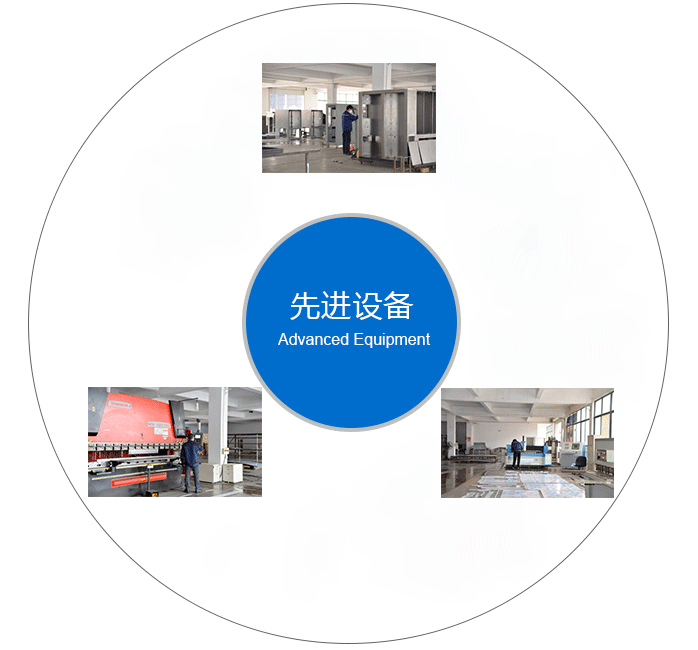About Us
Processing Technology
According to the basic processing methods of sheet metal parts, they are blanking, bending, stretching, forming and welding. This specification elaborates on the technological requirements that should be noted for each processing method.
Processing technology
1. Cut the materials
Blanking can be classified into common blanking, numerical blanking, shearing machine blanking, laser cutting and air cutting based on different processing methods. Due to the differences in processing methods, the processability of blanking also varies. The main sheet metal blanking methods are punching and laser cutting.
2. Bending
When the material is bent, in the rounded corner area, the outer layer is stretched while the inner layer is compressed. When the thickness of the material is constant, the smaller the internal r is, the more severe the stretching and compression of the material will be. When the tensile stress of the outer fillet exceeds the ultimate strength of the material, cracks and fractures will occur. Therefore, in the structural design of bending parts, a fillet radius that is too small should be avoided.
3. Stretch
The fillet radius between the bottom of the drawn part and the straight wall should be greater than the plate thickness, that is, r1≥t. To ensure a smoother stretching process, r1 is generally taken as (3 to 5)t, and the maximum fillet radius should be less than or equal to 8 times the plate thickness, that is, r1≤8t. Due to the different magnitudes of stress subjected to various parts of the stretched part, the thickness of the material after stretching will change. Generally speaking, the thickness at the center of the bottom remains the same, the material at the bottom fillet becomes thinner, the material near the flange at the top becomes thicker, and the material at the fillet around the rectangular drawn part becomes thicker.
4. Forming
Pressing ribs on plate-shaped metal parts helps increase structural rigidity. Louvers are usually used on various covers or casings to serve the purpose of ventilation and heat dissipation. The forming method is to cut the material with one edge of the punch, while the remaining part of the punch simultaneously stretches and deforms the material, forming a undulating shape with one side open.
5. Welding
The main welding methods include arc welding, electroslag welding, gas welding, plasma arc welding, fusion welding, pressure welding and brazing. For sheet metal product welding, arc welding and gas welding are the main methods.

Arc welding is flexible, mobile, widely applicable and can be used for all-position welding. The equipment used has the advantages of simplicity, good durability and low maintenance cost. However, the labor intensity is high and the quality is not stable enough, which depends on the operator's level. It is suitable for welding carbon steel, low alloy steel, stainless steel and non-ferrous alloys such as copper and aluminum larger than 3mm. The flame temperature and properties of gas welding can be adjusted. The heat source of arc welding is wider than the heat-affected zone, the heat is not as concentrated as that of the arc, and the productivity is low. It is applied to the welding of thin-walled structures and small parts, and can weld steel, cast iron, aluminum, copper and its alloys, hard alloys, etc.
Acceptance criteria
The inspection and acceptance site can be at the manufacturing plant or the product arrival location designated by Party A. The results should be consistent, and the result at the final arrival location shall be the final result.
Reference for acceptance criteria:
The flatness of the bottom surface and other side surfaces of the box is 1mm.
2. The verticality of the front and back or left and right facades of the box to the bottom surface is 1mm.
3. The parallelism between the top and bottom surfaces of the panel is 0.5mm, and the perpendicularity between the side and bottom surfaces is 0.5mm.
4.After the panel is installed in the box, it should be vertical and upright. The perpendicularity between its side and the bottom surface of the box should be 0.5mm, and the parallelism between the bottom surface and the bottom surface of the box should also be 0.5mm.
5. When installing the circuit board or chassis, a fixture should be used to simulate the assembly of the circuit board or chassis. When the fixture is inserted and removed from the chassis, it should be smooth. After the chassis is inserted, it should be securely and stably placed without any floating or loose phenomena. The hard-connected connectors should be accurately positioned, and there should be no abnormal obstruction during insertion and removal.





